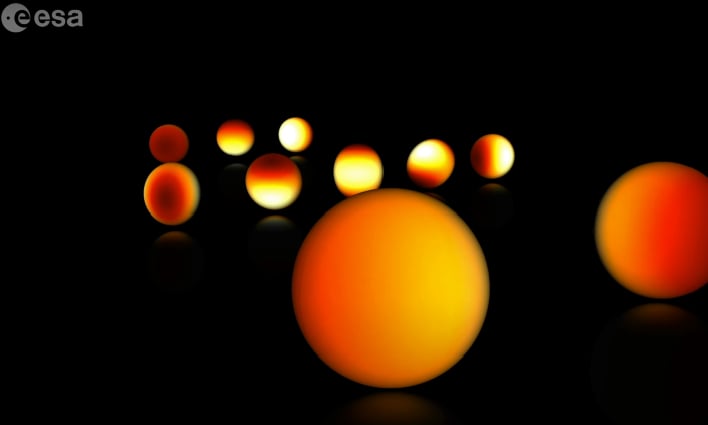Hear The Haunting Sounds Of Starquakes In The Most Detailed Milky Way Probe Ever

Space is no stranger to supernatural sounds. NASA released audio last month of a sonification from a black hole, as well as sounds from one of Jupiter's moons back in December of last year. Now ESA has added to those mysterious and ghostly sounds with the harmony of starquakes, which are tiny motions on the surface of a star.
ESA released a statement yesterday which stated, "One of the most surprising discoveries coming out of the new data is that Gaia is able to detect starquakes, tiny motions on the surface of a star, that changes shapes of stars, something the observatory was not originally built for."
Gaia had already detected radial oscillations that cause stars to swell and shrink regularly, while maintaining their spherical shape. However, it has now also found other vibrations that are similar to large-scale tsunamis. Due to the fact that these non-radial oscillations change the global shape of a star, they are more difficult to detect.
"Starquakes teach us a lot about stars, notably their internal workings. Gaia is opening a goldmine for 'asteroseismology' of massive stars," remarked Conny Aerts of KU Leuven in Belgium, a member of the Gaia collaboration.
Other findings by Gaia included new information about "chemical compositions, stellar temperatures, colours, masses, ages, and the speed at which stars move towards or away from us (radial velocity)," according to the statement by ESA. Also included in the new data set is the largest catalogue of binary stars to date, thousands of Solar System objects, and millions of quasars located outside the Milky Way.
Top Image Credit: ESA

